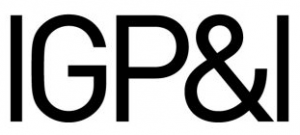Roll-on/roll-off and tanker vessels will be added to the list of vessel types required to control their emissions while at berth in a California port from 1 January 2025.

Reducing air pollution from ships in California ports
Published 21 October 2024
California’s regulation for ocean going vessels at berth
Since 2014, the California Resource Board (CARB) has regulated emissions from container, refrigerated cargo (reefer), and passenger vessels that visit certain state ports. Following the positive results of this regulation, and in an effort to further reduce the public's exposure to air pollution caused by commercial vessels that visit California ports and terminals, its new '2020 At Berth Regulation' took effect on 1 January 2021.
The new regulation continues to cover emissions from container, reefer and passenger vessels, but also expands the requirements to more pollutants and vessel types. Furthermore, it determines the need for emission control regulation in each port based on the port’s annual vessel activity. The emission control requirements are phased in based on vessel type, and as of 1 January 2025, roll-on/roll off (ro/ro) vessels, and tanker vessels visiting the Ports of Los Angeles or Long Beach, will be regulated.
| Compliance start | Vessel type |
|---|---|
1 January 2023 | Container, reefer, passenger |
1 January 2025 | Roll-on/roll-off (ro/ro) |
1 January 2025 | Tankers that visit the Ports of Los Angeles or Long Beach |
1 January 2027 | Tankers that visit all remaining California ports |
Key points for vessel operators
All vessels visiting a California port are subject to requirements of the 2020 At Berth Regulation.
Only container, reefer, passenger, ro/ro and tanker vessels are subject to emission control requirements. However, vessel types such as bulk and general cargo vessels must comply with other relevant obligations under the regulation, including opacity, or blackness of smoke, and visit reporting requirements.
Low activity terminals are exempted from the emission control requirements. However, if a low activity terminal receives 20 or more visits per year from a regulated vessel type, for two consecutive calendar years, that terminal no longer qualifies for the low activity exemption for that vessel type and visiting vessels will be required to reduce emissions starting 1 January the following year.
Vessels subject to emission control requirements must use a ‘CARB approved emission control strategy’ (CAECS) to control emissions for the duration of a visit. At the time of writing, compliance will most likely be achieved by the use of shore power and/or emissions capture and control systems. However, if a vessel wishes to use a strategy for compliance that is currently not approved for use, such as batteries or alternative fuels, they must apply for CARB approval of that strategy as a CAESC.
Vessel operators must communicate with terminal operators in writing at least seven days before arrival to coordinate shore power and other CAECS needs. While ABS' guide to terminal-supplied CAECS is a useful resource for planning ahead, a check with the local agent as to availability of CAECS at a specific port for the estimated visiting time can be recommended.

Images of a CARB-Approved Emissions Control Strategy (CAECS) in service - provided by STAX.
Be prepared
As the procedures and equipment needed for ro/ro and tanker vessels to comply with CARB’s emission control requirements could be quite extensive and costly, we advise ship operators trading to California ports to familiarise themselves with the 2020 At Berth Regulation and the control strategies currently approved by CARB. The preparatory work to ensure timely compliance should not be postponed, and the following sources of information are recommended:
CARB: Ocean-Going Vessels At Berth Regulation website – including links to regulatory documents, frequently asked questions (FAQ), reporting templates, etc.
Gard: Enforcement of California’s new At-Berth Regulation began on 1 January 2023
Gard: Prepare for tougher at-berth emissions reductions in California
ABS: CARB shore power directory - a guide to terminal-supplied CAECS


